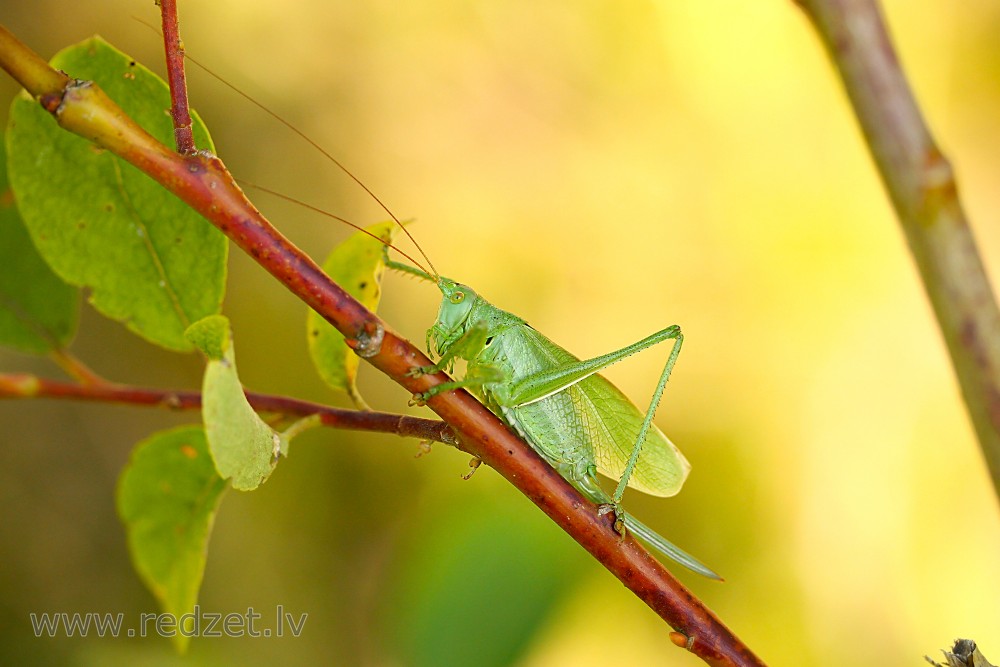Tettigoniidae (Bush crickets)
Insects in the family Tettigoniidae are commonly called bush crickets (in the UK), katydids (in the USA), or long-horned grasshoppers (mostly obsolete). More than 6,400 species are known. Part of the suborder Ensifera, the Tettigoniidae are the only family in the superfamily Tettigonioidea
Primarily nocturnal in habit, with strident mating calls, many katydids exhibit mimicry and camouflage, commonly with shapes and colors similar to leaves.
| Tettigoniidae | |
| Kingdom: | Animalia |
| Phylum: | Euarthropoda |
| Class: | Insecta |
| Order: | Orthoptera |
| Suborder: | Ensifera |
| Infraorder: | Tettigoniidea |
| Superfamily: | Tettigonioidea |
| Family: | Tettigoniidae |
Description and lifecycle
Description
Tettigoniids range in size from as small as 5 to as large as 130 mm. The smaller species typically live in drier or more stressful habitats which may lead to their small size. The small size is associated with greater agility, faster development, and lower nutritional needs. Tettigoniids are tree-living insects that are most commonly heard at night during summer and early fall. Tettigoniids may be distinguished from the grasshopper by the length of their filamentous antennae, which may exceed their own body length, while grasshoppers' antennae are always relatively short and thickened.
Lifecycle
The lifespan of a katydid is about a year, with full adulthood usually developing very late. Females most typically lay their eggs at the end of summer beneath the soil or in plant stem holes. The eggs are typically oval and laid in rows on the host plant. The way their ovipositor is formed relates to its function where it lays eggs. The ovipositor is an organ used by insects for laying eggs. It consists of up to three pairs of appendages formed to transmit the egg, to make a place for it, and place it properly. Tettigoniids have either sickle-shaped ovipositors which typically lay eggs in dead or living plant matter, or uniform long ovipositors which lay eggs in grass stems. When tettigoniids hatch, the nymphs often look like smaller versions of the adults, but in some species, the nymphs look nothing at all like the adult and rather mimic other species such as spiders and assassin bugs, or flowers, to prevent predation. The nymphs remain in a mimic state only until they are large enough to escape predation. Once they complete their last molt, they are then prepared to mate.
en.wikipedia.org
https://en.wikipedia.org/wiki/Tettigoniidae
Continue reading








